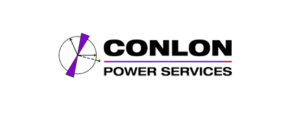In the dynamic digital landscape, your website serves as the cornerstone of your brand’s online presence. For Irish startups, this is particularly crucial, as a well-designed website can set you apart in a competitive market. Understanding the unique challenges and opportunities within the Irish and Northern Irish digital ecosystems is key to crafting a website that not only looks great but also performs excellently in search engine rankings. Here are some indispensable website design tips tailored for Irish startups looking to make a significant impact online.
1. Leverage the Latest in Web Design Trends
Adapting to the latest web design trends can set your startup apart. Consider immersive elements like micro-interactions, dynamic scrolling, and engaging animations that breathe life into your website. These features can significantly enhance the user experience, making your website not just a source of information but a memorable journey for your visitors.
AI and Personalisation
Utilise artificial intelligence to create a more personalised user experience. AI can help tailor your website’s content, offers, and even design elements to individual user preferences, based on their browsing history and interaction patterns. This level of personalisation can greatly increase engagement and conversion rates, making users feel seen and valued.
Accessibility and Inclusivity
Designing with accessibility in mind goes beyond ethical considerations; it expands your reach to a wider audience. Ensure your website is accessible to users with disabilities by adhering to WCAG (Web Content Accessibility Guidelines) standards. This includes text alternatives for non-text content, making all functionality available from a keyboard, and ensuring your website can be easily navigated and understood.
2. Opt for a Content-First Approach
In the realm of SEO and engagement, content reigns supreme. A content-first approach prioritises the delivery of high-quality, relevant content that answers your audience’s questions and needs. This involves:
- Keyword Research: Conduct thorough keyword research specific to the Irish market to understand what potential customers are searching for.
- Quality Over Quantity: Focus on creating high-quality content that provides value, rather than overwhelming your audience with volume.
- Localisation: Tailor your content to reflect local nuances, cultural references, and the unique aspects of the Irish and Northern Irish markets.
3. Implement Advanced SEO Strategies
Beyond basic SEO practices, dive into more sophisticated strategies like structured data to help search engines understand your site content better, enhancing visibility in search results. Additionally, consider local SEO tactics to target users in specific regions within Ireland, optimizing your presence in local search queries.
4. Embrace Sustainable Web Design
Sustainability is becoming increasingly important to consumers. Implementing sustainable web design practices can reduce your website’s carbon footprint and appeal to environmentally conscious users. This includes optimizing images and videos for faster loading times and lower data usage, choosing green web hosting, and minimizing the use of energy-intensive elements.
5. Utilise Cutting-Edge Technologies
Stay ahead by incorporating the latest technologies into your web design. This could include progressive web apps (PWAs) that offer a high-quality user experience akin to native apps or exploring the potential of augmented reality (AR) to create interactive experiences that can showcase your products or services in unique ways.
By adopting these advanced and nuanced web design strategies, Irish startups can create websites that not only stand out aesthetically but also excel in functionality, user engagement, and SEO performance. The digital landscape is ever-evolving, and staying ahead requires a commitment to innovation, quality, and a deep understanding of your audience’s needs and preferences.











